- Home
- H. P. Lovecraft
The Cthulhu Mythos Megapack
The Cthulhu Mythos Megapack Read online
Table of Contents
THE CTHULHU MYTHOS MEGAPACK
COPYRIGHT INFORMATION
AT THE MOUNTAINS OF MADNESS (Part 1), by H. P. Lovecraft
AT THE MOUNTAINS OF MADNESS (Part 2), by H. P. Lovecraft
AT THE MOUNTAINS OF MADNESS (Part 3), by H. P. Lovecraft
THE EVENTS AT POROTH FARM, by T.E.D. Klein
THE RETURN OF THE SORCERER, by Clark Ashton Smith
WORMS OF THE EARTH, by Robert E. Howard
ENVY, THE GARDENS OF YNATH, AND THE SIN OF CAIN, by Darrell Schweitzer
DRAWN FROM LIFE, by John Glasby
IN THE HAUNTED DARKNESS, by Michael R. Collings
THE SHADOW OVER INNSMOUTH (Part 1), by H. P. Lovecraft
THE SHADOW OVER INNSMOUTH (Part 2), by H. P. Lovecraft
THE INNSMOUTH HERITAGE, by Brian Stableford
THE DOOM THAT CAME TO INNSMOUTH, by Brain McNaughton
THE NAMELESS OFFSPRING, by Clark Ashton Smith
THE HOUNDS OF TINDALOS, by Frank Belknap Long
THE FACELESS GOD, by Robert Bloch
THE CHILDREN OF BURMA, by Stephen Mark Rainey
THE CALL OF CTHULHU, by H.P. Lovecraft
THE OLD ONE, by John Glasby
THE HOLINESS OF AZÉDARAC, by Clark Ashton Smith
THOSE OF THE AIR, by Darrell Schweitzer and Jason Van Hollander
THE GRAVEYARD RATS, by Henry Kuttner
TOADFACE, by Mark McLaughlin
THE WHISPERER IN DARKNESS (Part 1), by H. P. Lovecraft
THE WHISPERER IN DARKNESS (Part 2), by H. P. Lovecraft
THE EATER OF HOURS, by Darrell Schweitzer
UBBO-SATHLA, by Clark Ashton Smith
THE SPACE-EATERS, by Frank Belknap Long
THE FIRE OF ASSHURBANIPAL, by Robert E. Howard
BEYOND THE WALL OF SLEEP, by H. P. Lovecraft
SOMETHING IN THE MOONLIGHT, by Lin Carter
THE SALEM HORROR, by Henry Kuttner
THE COLOUR OUT OF SPACE, by H.P. Lovecraft
DOWN IN LIMBO, by Robert M. Price
THE DWELLER IN THE GULF, by Clark Ashton Smith
AZATHOTH, by H.P. Lovecraft
PICKMAN’S MODEM, by Lawrence Watt-Evans
THE HUNTERS FROM BEYOND, by Clark Ashton Smith
GHOULMASTER, by Brian McNaughton
THE SPAWN OF DAGON, by Henry Kuttner
DARK DESTROYER, by Adrian Cole
THE DUNWICH HORROR, by H. P. Lovecraft
THE DARK BOATMAN, by John Glasby
DAGON AND JILL, by John P. McCann
ABOUT THE AUTHORS
THE CTHULHU MYTHOS MEGAPACK
40 CLASSIC AND MODERN LOVECRAFTIAN STORIES
EDITED BY
JOHN GREGORY BETANCOURT
AND COLIN AZARIAH-KRIBBS
COPYRIGHT INFORMATION
The Cthulhu Megapack is copyright © 2012 by Wildside Press LLC. All rights reserved.
* * * *
“At the Mountains of Madness,” by H. P. Lovecraft, originally appeared as a three-part serial in Astounding Stories (February-April 1936).
“The Events at Poroth Farm,” by T.E.D. Klein, originally appeared in From Beyond the Dark Gateway #2, December 1972. Reprinted by permission of the author. This version has been revised especially for this edition and is copyright © 2012 by T.E.D. Klein.
“The Return of the Sorcerer, by Clark Ashton Smith, originally appeared in Wonder Stories, March 1933.
“Worms of the Earth,” by Robert E. Howard, originally appeared in Weird Tales, November 1932.
“Envy, the Gardens of Ynath, and the Sin of Cain,” by Darrell Schweitzer, originally appeared in Interzone, April 2002. Reprinted by permission of the author.
“Drawn from Life,” by John Glasby, is copyright © 2012 by the Estate of John Glasby. This is its first publication in this form. Published by permission of the Cosmos Literary Agency.
“In the Haunted Darkness,” by Michael R. Collings, is copyright © 2012 by Michael R. Collings. Published by permission of the author.
“The Innsmouth Heritage,” by Brian Stableford, originally appeared as a chapbook from Necronomicon Press. Copyright © 1992 by Brian Stableford.
“The Doom That Came to Innsmouth,” by Brian McNaughton, originally appeared in Tales Out of Innsmouth. Revised edition appeared in Even More Nasty Stories (Wildside Press). Copyright © 1999, 2000 by Brian McNaughton. Reprinted by permission of the author.
“The Shadow Over Innsmouth,” by H. P. Lovecraft, originally appeared as a book in 1936 from the Visionary Publishing Company.
“The Nameless Offspring,” by Clark Ashton Smith, originally appeared in The Magazine of Horror #33 (1932).
“The Hounds of Tindalos,” by Frank Belknap Long, originally appeared in Weird Tales, March 1939.
“The Faceless God,” by Robert Bloch, originally appeared in Weird Tales, May 1936.
“The Children of Burma,” by Stephen Mark Rainey, originally appeared in The Spook #1, July 2001. Copyright © 2001 by Stephen Mark Rainey. Reprinted by permission of the author.
“The Call of Cthulhu,” by H.P. Lovecraft, originally appeared in Weird Tales, February 1928.
“The Old One,” by John Glasby, is copyright © 2012 by the Estate of John Glasby. This is its first publication in this form. Published by permission of the Cosmos Literary Agency.
“The Holiness of Azédarac,” by Clark Ashton Smith, originally appeared in Weird Tales, November 1933.
“Those of the Air,” by Darrell Schweitzer and Jason Van Hollander, originally appeared in Cthulhu’s Heirs. Copyright © 1992 by Darrell Schweitzer and Jason Van Hollander. Reprinted by permission of the authors.
“The Graveyard Rats,” by Henry Kuttner, originally appeared in Weird Tales, March 1936.
“Toadface,” by Mark McLaughlin, originally appeared in Motivational Shrieker. Copyright © 2004 by Mark McLaughlin. Reprinted by permission of the author.
“The Whisperer in Darkness,” by H. P. Lovecraft, originally appeared in Weird Tales, August 1931.
“The Eater of Hours,” by Darrell Schweitzer, originally appeared in Inhuman #4, copyright © 2009 by Darrell Schweitzer. Reprinted by permission of the author.
“Ubbo-Sathla,” by Clark Ashton Smith, originally appeared in Weird Tales, July 1933.
“The Space-Eaters,” by Frank Belknap Long, originally appeared in Weird Tales, July 1928.
“The Fire of Asshurbanipal,” by Robert E. Howard, originally appeared in Weird Tales, December 1936.
“Beyond the Wall of Sleep,” by H.P. Lovecraft, originally appeared in Pine Cones, October 1919.
“Something in the Moonlight,” by Lin Carter, originally appeared in Weird Tales #2, copyright © 1980 by Lin Carter. Reprinted by permission of Lin Carter Properties.
“The Salem Horror,” by Henry Kuttner, originally appeared in Weird Tales, May 1937.
“Down in Limbo,” by Robert M. Price, originally appeared in Deathrealm #24, copyright © 1995 by Robert M. Price. Reprinted by permission of the author.
“The Dweller in the Gulf,” by Clark Ashton Smith, originally appeared in The Abominations of Yondo (1960).
“Azathoth,” by H.P. Lovecraft, originally appeared in Leaves (1938).
“Pickman’s Modem,” by Lawrence Watt-Evans, originally appeared in Isaac Asimov’s Science Fiction Magazine, February 1992. Copyright © 1992 by Lawrence Watt-Evans. Reprinted by permission of the author.
“The Hunters
from Beyond,” by Clark Ashton Smith, originally appeared in Strange Tales of Mystery and Terror, Oct 1932.
“Ghoulmaster,” by Brian McNaughton, originally appeared in Miskatonic University. A revised version appeared in Even More Nasty Stories (Wildside Press). Copyright © 1996, 2000 by Brian McNaughton. Reprinted by permission of Wildside Press LLC.
“The Spawn of Dagon,” by Henry Kuttner, originally appeared in Weird Tales, July 1938.
“Dark Destroyer,” by Adrian Cole, originally appeared in Swords Against the Millenium and is copyright © 2000 by Adrian Cole. Reprinted by permission of the author. Published by permission of the Cosmos Literary Agency.
“The Dunwich Horror,” by H. P. Lovecraft, originally appeared in Weird Tales, April 1929.
“The Dark Boatman” is copyright © 2012 by the Estate of John Glasby. This is its first publication in this form.
“Dagon and Jill,” by John P. McCann, originally appeared in Necrotic Tissue #13. Copyright © 2011 by John P. McCann. Reprinted by permission of the author.
Cover art © 2012 by Fotolia.
AT THE MOUNTAINS OF MADNESS (Part 1), by H. P. Lovecraft
I
I am forced into speech because men of science have refused to follow my advice without knowing why. It is altogether against my will that I tell my reasons for opposing this contemplated invasion of the Antarctic—with its vast fossil hunt and its wholesale boring and melting of the ancient ice caps. And I am the more reluctant because my warning may be in vain.
Doubt of the real facts, as I must reveal them, is inevitable; yet, if I suppressed what will seem extravagant and incredible, there would be nothing left. The hitherto withheld photographs, both ordinary and aerial, will count in my favor, for they are damnably vivid and graphic. Still, they will be doubted because of the great lengths to which clever fakery can be carried. The ink drawings, of course, will be jeered at as obvious impostures, notwithstanding a strangeness of technique which art experts ought to remark and puzzle over.
In the end I must rely on the judgment and standing of the few scientific leaders who have, on the one hand, sufficient independence of thought to weigh my data on its own hideously convincing merits or in the light of certain primordial and highly baffling myth cycles; and on the other hand, sufficient influence to deter the exploring world in general from any rash and over-ambitious program in the region of those mountains of madness. It is an unfortunate fact that relatively obscure men like myself and my associates, connected only with a small university, have little chance of making an impression where matters of a wildly bizarre or highly controversial nature are concerned.
It is further against us that we are not, in the strictest sense, specialists in the fields which came primarily to be concerned. As a geologist, my object in leading the Miskatonic University Expedition was wholly that of securing deep-level specimens of rock and soil from various parts of the Antarctic continent, aided by the remarkable drill devised by Professor Frank H. Pabodie of our engineering department. I had no wish to be a pioneer in any other field than this, but I did hope that the use of this new mechanical appliance at different points along previously explored paths would bring to light materials of a sort hitherto unreached by the ordinary methods of collection.
Pabodie’s drilling apparatus, as the public already knows from our reports, was unique and radical in its lightness, portability, and capacity to combine the ordinary artesian drill principle with the principle of the small circular rock drill in such a way as to cope quickly with strata of varying hardness. Steel head, jointed rods, gasoline motor, collapsible wooden derrick, dynamiting paraphernalia, cording, rubbish-removal auger, and sectional piping for bores five inches wide and up to one thousand feet deep all formed, with needed accessories, no greater load than three seven-dog sledges could carry. This was made possible by the clever aluminum alloy of which most of the metal objects were fashioned. Four large Dornier aeroplanes, designed especially for the tremendous altitude flying necessary on the Antarctic plateau and with added fuel-warming and quick-starting devices worked out by Pabodie, could transport our entire expedition from a base at the edge of the great ice barrier to various suitable inland points, and from these points a sufficient quota of dogs would serve us.
We planned to cover as great an area as one Antarctic season—or longer, if absolutely necessary—would permit, operating mostly in the mountain ranges and on the plateau south of Ross Sea; regions explored in varying degree by Shackleton, Amundsen, Scott, and Byrd. With frequent changes of camp, made by aeroplane and involving distances great enough to be of geological significance, we expected to unearth a quite unprecedented amount of material—especially in the pre-Cambrian strata of which so narrow a range of Antarctic specimens had previously been secured. We wished also to obtain as great as possible a variety of the upper fossiliferous rocks, since the primal life history of this bleak realm of ice and death is of the highest importance to our knowledge of the earth’s past. That the Antarctic continent was once temperate and even tropical, with a teeming vegetable and animal life of which the lichens, marine fauna, arachnida, and penguins of the northern edge are the only survivals, is a matter of common information; and we hoped to expand that information in variety, accuracy, and detail. When a simple boring revealed fossiliferous signs, we would enlarge the aperture by blasting, in order to get specimens of suitable size and condition.
Our borings, of varying depth according to the promise held out by the upper soil or rock, were to be confined to exposed, or nearly exposed, land surfaces—these inevitably being slopes and ridges because of the mile or two-mile thickness of solid ice overlying the lower levels. We could not afford to waste drilling the depth of any considerable amount of mere glaciation, though Pabodie had worked out a plan for sinking copper electrodes in thick clusters of borings and melting off limited areas of ice with current from a gasoline-driven dynamo. It is this plan—which we could not put into effect except experimentally on an expedition such as ours—that the coming Starkweather-Moore Expedition proposes to follow, despite the warnings I have issued since our return from the Antarctic.
The public knows of the Miskatonic Expedition through our frequent wireless reports to the Arkham Advertiser and Associated Press, and through the later articles of Pabodie and myself. We consisted of four men from the University—Pabodie, Lake of the biology department, Atwood of the physics department—also a meteorologist—and myself, representing geology and having nominal command—besides sixteen assistants: seven graduate students from Miskatonic and nine skilled mechanics. Of these sixteen, twelve were qualified aeroplane pilots, all but two of whom were competent wireless operators. Eight of them understood navigation with compass and sextant, as did Pabodie, Atwood, and I. In addition, of course, our two ships—wooden ex-whalers, reinforced for ice conditions and having auxiliary steam—were fully manned.
The Nathaniel Derby Pickman Foundation, aided by a few special contributions, financed the expedition; hence our preparations were extremely thorough, despite the absence of great publicity. The dogs, sledges, machines, camp materials, and unassembled parts of our five planes were delivered in Boston, and there our ships were loaded. We were marvelously well-equipped for our specific purposes, and in all matters pertaining to supplies, regimen, transportation, and camp construction we profited by the excellent example of our many recent and exceptionally brilliant predecessors. It was the unusual number and fame of these predecessors which made our own expedition—ample though it was—so little noticed by the world at large.
As the newspapers told, we sailed from Boston Harbor on September 2nd, 1930, taking a leisurely course down the coast and through the Panama Canal, and stopping at Samoa and Hobart, Tasmania, at which latter place we took on final supplies. None of our exploring party had ever been in the polar regions before, hence we all relied greatly on our ship captains—J. B. Douglas, commanding the brig Arkham, and serving as commander of the sea party, and Georg Thorfinnssen
, commanding the barque Miskatonic—both veteran whalers in Antarctic waters.
As we left the inhabited world behind, the sun sank lower and lower in the north, and stayed longer and longer above the horizon each day. At about 62° South Latitude we sighted our first icebergs—tablelike objects with vertical sides—and just before reaching the Antarctic circle, which we crossed on October 20th with appropriately quaint ceremonies, we were considerably troubled with field ice. The falling temperature bothered me considerably after our long voyage through the tropics, but I tried to brace up for the worse rigors to come. On many occasions the curious atmospheric effects enchanted me vastly; these including a strikingly vivid mirage—the first I had ever seen—in which distant bergs became the battlements of unimaginable cosmic castles.
Pushing through the ice, which was fortunately neither extensive nor thickly packed, we regained open water at South Latitude 67°, East Longitude 175°. On the morning of October 26th a strong land blink appeared on the south, and before noon we all felt a thrill of excitement at beholding a vast, lofty, and snow-clad mountain chain which opened out and covered the whole vista ahead. At last we had encountered an outpost of the great unknown continent and its cryptic world of frozen death. These peaks were obviously the Admiralty Range discovered by Ross, and it would now be our task to round Cape Adare and sail down the east coast of Victoria Land to our contemplated base on the shore of McMurdo Sound, at the foot of the volcano Erebus in South Latitude 77° 9’.
The last lap of the voyage was vivid and fancy-stirring. Great barren peaks of mystery loomed up constantly against the west as the low northern sun of noon or the still lower horizon-grazing southern sun of midnight poured its hazy reddish rays over the white snow, bluish ice and water lanes, and black bits of exposed granite slope. Through the desolate summits swept ranging, intermittent gusts of the terrible Antarctic wind; whose cadences sometimes held vague suggestions of a wild and half-sentient musical piping, with notes extending over a wide range, and which for some subconscious mnemonic reason seemed to me disquieting and even dimly terrible. Something about the scene reminded me of the strange and disturbing Asian paintings of Nicholas Roerich, and of the still stranger and more disturbing descriptions of the evilly fabled plateau of Leng which occur in the dreaded Necronomicon of the mad Arab Abdul Alhazred. I was rather sorry, later on, that I had ever looked into that monstrous book at the college library.

 The Best of H.P. Lovecraft
The Best of H.P. Lovecraft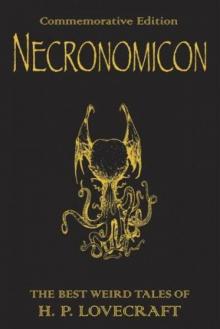 The Definitive H.P. Lovecraft: 67 Tales Of Horror In One Volume
The Definitive H.P. Lovecraft: 67 Tales Of Horror In One Volume The Complete Works of H.P. Lovecraft
The Complete Works of H.P. Lovecraft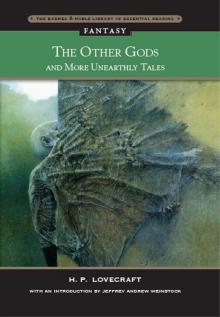 Other Gods and More Unearthly Tales
Other Gods and More Unearthly Tales Lovecraft's Fiction Volume I, 1905-1925
Lovecraft's Fiction Volume I, 1905-1925 The Shadow Out of Time
The Shadow Out of Time The Shunned House
The Shunned House Lovecraft's Fiction Volume II, 1926-1928
Lovecraft's Fiction Volume II, 1926-1928 The Thing on the Doorstep and Other Weird Stories
The Thing on the Doorstep and Other Weird Stories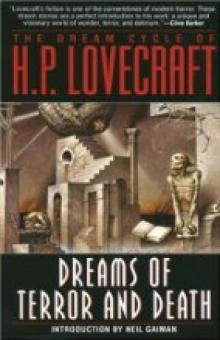 Dream Cycle of H. P. Lovecraft: Dreams of Terror and Death
Dream Cycle of H. P. Lovecraft: Dreams of Terror and Death Great Tales of Horror
Great Tales of Horror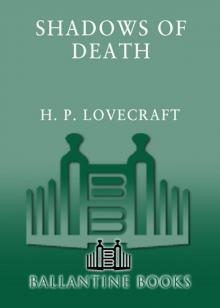 Shadows of Death
Shadows of Death Delphi Complete Works of H. P. Lovecraft (Illustrated)
Delphi Complete Works of H. P. Lovecraft (Illustrated) Waking Up Screaming: Haunting Tales of Terror
Waking Up Screaming: Haunting Tales of Terror H.P. Lovecraft Goes to the Movies
H.P. Lovecraft Goes to the Movies The Road to Madness
The Road to Madness The Complete H.P. Lovecraft Reader (68 Stories)
The Complete H.P. Lovecraft Reader (68 Stories)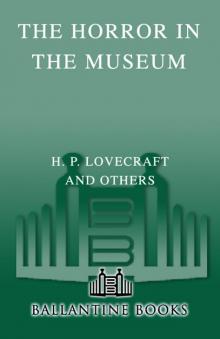 The Horror in the Museum
The Horror in the Museum Collected Fiction Volume 1 (1905-1925): A Variorum Edition
Collected Fiction Volume 1 (1905-1925): A Variorum Edition Lovecrafts_Fiction, vol.I_1905-1925
Lovecrafts_Fiction, vol.I_1905-1925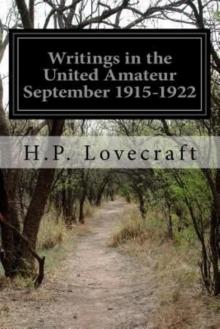 Writings in the United Amateur, 1915-1922
Writings in the United Amateur, 1915-1922 H.P. Lovecraft: The Complete Works
H.P. Lovecraft: The Complete Works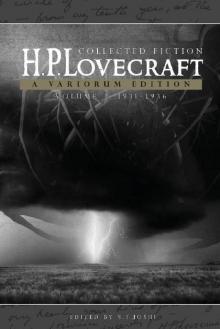 Collected Fiction Volume 3 (1931-1936): A Variorum Edition
Collected Fiction Volume 3 (1931-1936): A Variorum Edition H.P. Lovecraft: The Complete Fiction
H.P. Lovecraft: The Complete Fiction Collected Fiction Volume 2 (1926-1930): A Variorum Edition
Collected Fiction Volume 2 (1926-1930): A Variorum Edition Yog Sothothery - The Definitive H.P. Lovecraft Anthology
Yog Sothothery - The Definitive H.P. Lovecraft Anthology The Complete H.P. Lovecraft Collection (Xist Classics)
The Complete H.P. Lovecraft Collection (Xist Classics)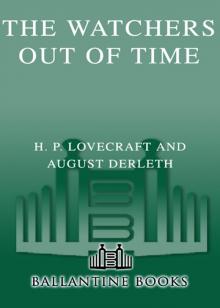 The Watchers Out of Time
The Watchers Out of Time Eldritch Tales
Eldritch Tales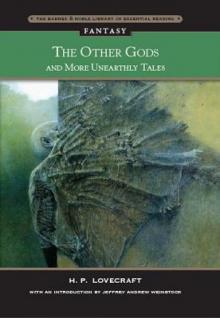 The Other Gods And More Unearthly Tales
The Other Gods And More Unearthly Tales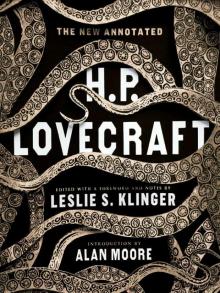 The New Annotated H. P. Lovecraft
The New Annotated H. P. Lovecraft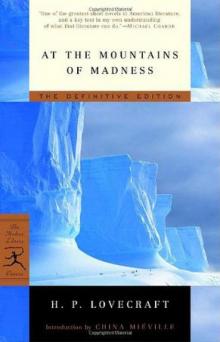 At the mountains of madness
At the mountains of madness Bloodcurdling Tales of Horror and the Macabre
Bloodcurdling Tales of Horror and the Macabre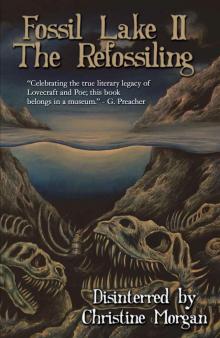 Fossil Lake II: The Refossiling
Fossil Lake II: The Refossiling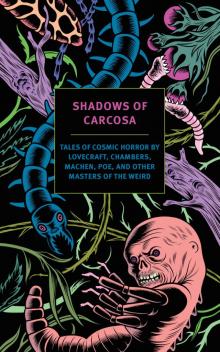 Shadows of Carcosa: Tales of Cosmic Horror by Lovecraft, Chambers, Machen, Poe, and Other Masters of the Weird
Shadows of Carcosa: Tales of Cosmic Horror by Lovecraft, Chambers, Machen, Poe, and Other Masters of the Weird H. P. Lovecraft
H. P. Lovecraft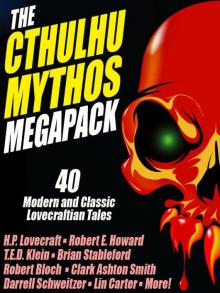 The Cthulhu Mythos Megapack
The Cthulhu Mythos Megapack The Complete H. P. Lovecraft Reader (2nd Edition)
The Complete H. P. Lovecraft Reader (2nd Edition)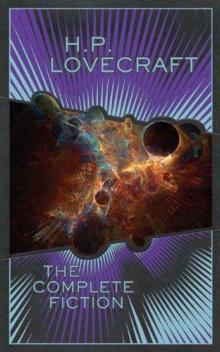 The Complete Fiction
The Complete Fiction Waking Up Screaming
Waking Up Screaming Transition of H. P. Lovecraft
Transition of H. P. Lovecraft![[1935] The Shadow Out of Time Read online](http://i1.bookreadfree.com/i2/04/12/1935_the_shadow_out_of_time_preview.jpg) [1935] The Shadow Out of Time
[1935] The Shadow Out of Time The Horror Megapack
The Horror Megapack